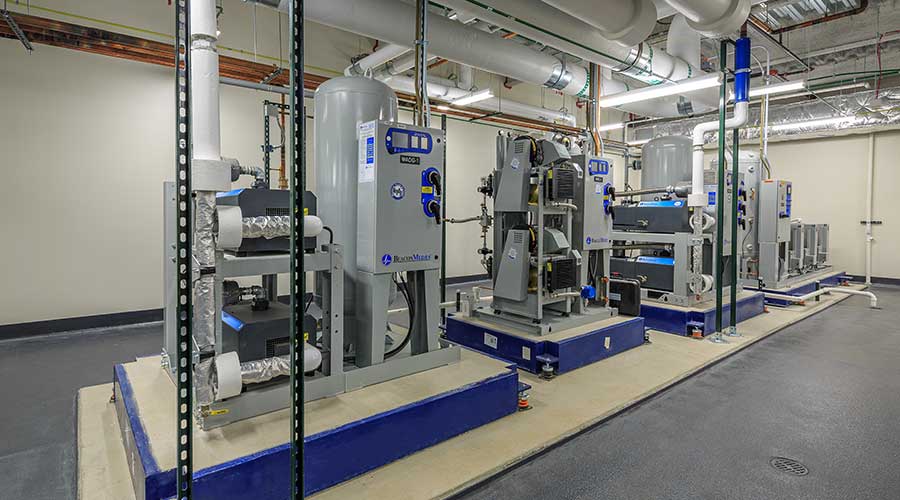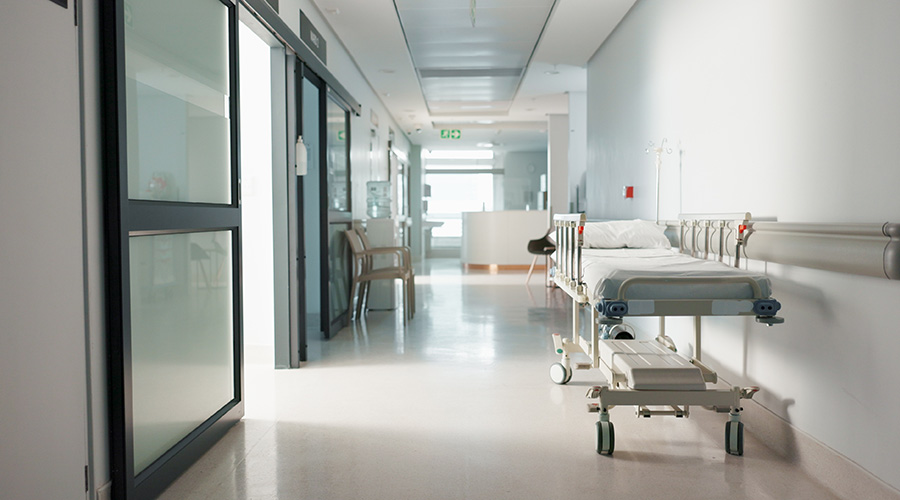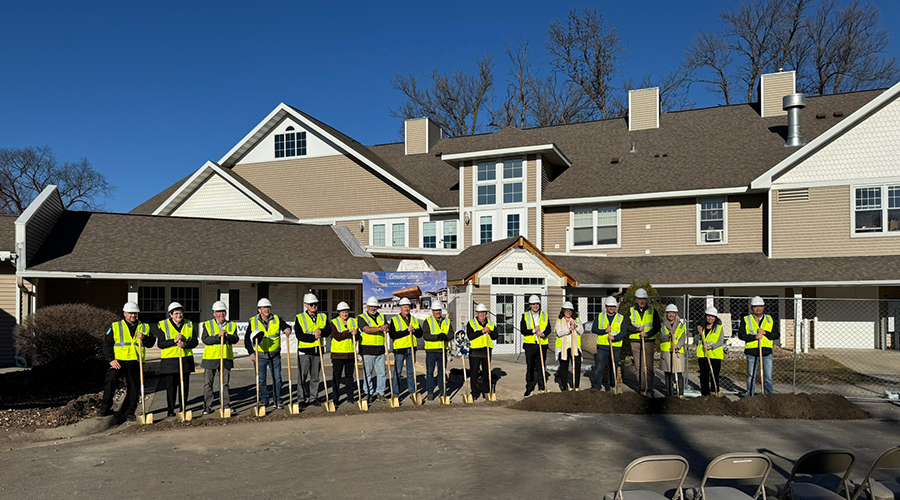Engineers work closely with healthcare facilities and take great pride in designing systems that provide critical life support for patients and enable healthcare workers to provide top-of-the-line care. Medical gas systems need to support the current programming requirements of a facility and be flexible enough to adapt and support the constantly changing environments they serve.
Straining systems
The COVID-19 pandemic was a wakeup call for the healthcare industry and emphasized the importance of a resilient infrastructure. During the height of COVID-19, the industry saw a major strain on medical gas systems, particularly oxygen and medical air, as healthcare providers were pushing the limits of systems and using medical gases at rates never before seen.
Healthcare organizations also housed patients in areas of the hospital not intended for critical-care patient use. As a result, many healthcare facilities were left scrambling to determine the number of patients they could accommodate and how far they could push their source equipment before hitting the failure point.
It is common for existing healthcare facilities to undergo many remodels and modifications over their lifespans. While the ideal scenario is for a review of the entire medical gas system to occur with each new modification, this is not always the case. As a facility evolves and expands, medical gas requirements also change, whether that is adding new patient rooms or operating rooms or renovating administrative space to patient space.
An independent review of the medical gas systems, including equipment and pipe sizing, can identify areas of risk and significant issues. Some of these issues might be apparent, such as continuous alarms for low zone pressures, but others, such as central systems with insufficient capacity, might not become apparent until they become critical.
In sequence with reviewing the existing systems, a proper master plan can aid the facility management team in systematically planning and implementing infrastructure upgrades. It is crucial to understand the facility as it relates to its current capabilities, routine growth and emergency preparedness.
Working alongside the engineering team on a master plan also can inform a manager on other changes that might be of interest, such as technology integration, new sustainable practices and energy-efficiency improvements. Understanding these changes is essential to planning for the required capital investments.
Building a master plan
A proper master plan should include discussions between the engineering and facilities teams on the following:
Assessment. This step involves a comprehensive evaluation of the existing medical gas piping infrastructure and sources systems, including capacity review, pressure drop calculations and code assessment.
Risk analysis. Identify potential risks to the medical gas systems, such as supply chain disruptions and equipment downtime, and their impacts on operations.
Future planning. Identify potential future requirements of the medical gas system, including changing patient acuity, renovations and additions.
Scenario planning. Engineering teams should test the systems for scenarios in which demand might significantly exceed normal levels — i.e., pandemic mode — to ensure the system can operate at these levels or prepare a plan of action for such events.
We recently helped a client develop a medical gas master plan. As part of the architectural master plan, the client had a clear vision of care spaces that were needed, either relocated programs or new programs, the location of each program in the facility and the phasing required of each project.
But there was little understanding of the impacts on the medical gas systems as a result. Our review found that areas of the facility already were starved of gases and that the facility’s source equipment did not have adequate capacity to meet the new, higher-acuity space requirements of the renovations.
With a comprehensive assessment of the facility’s state, an understanding of future requirements and a knowledge of the pandemic response plan, we identified the infrastructure upgrades in distribution piping and source equipment required to meet the demands of the facility. Our recommendations aided the facility management team in creating a plan of action to rectify the issues while creating a flexible and resilient medical gas system.
An analysis by an independent reviewer knowledgeable in the subject of medical gas can assess a facility by evaluating systems through a data-driven approach and provide a comprehensive plan with everything from simple fixes to major source equipment overhauls.
Ensuring that hospitals and medical facilities have reliable medical gas systems is essential to providing quality care. A comprehensive master plan enables facilities to address deficiencies, adapt to changing care needs and plan for the future.
Ryan Hunwardsen, ASSE 6060, is a mechanical engineering designer for HGA, an architectural and engineering design firm. Ray Schwalbe, P.E., is a mechanical engineer with the firm. Jill Imig, P.E., ASSE 6060, is mechanical engineering department leader with the firm.

 Healthcare Is the New Retail
Healthcare Is the New Retail Bridgeway Behavioral Health Services Launches Campaign to Renovate Health Center
Bridgeway Behavioral Health Services Launches Campaign to Renovate Health Center Ground Broken for New North Dakota State Hospital
Ground Broken for New North Dakota State Hospital AI Usage for Healthcare Facilities
AI Usage for Healthcare Facilities Ground Broken on Pelican Valley Senior Living Modernization Project
Ground Broken on Pelican Valley Senior Living Modernization Project